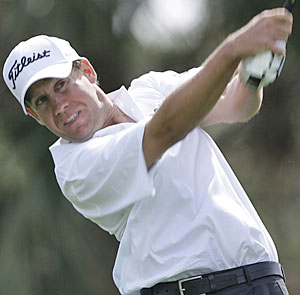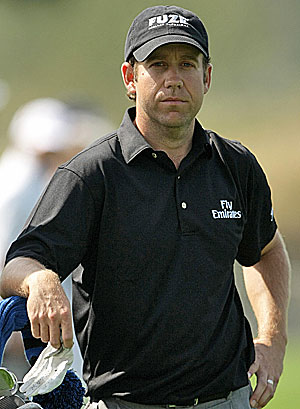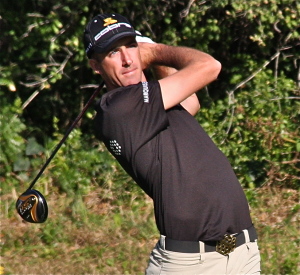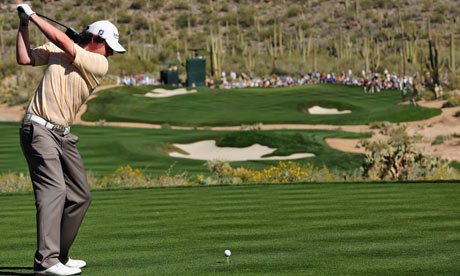In the latest edition of the weekly epic known as the SI Golf Plus/golf.com/Golf Magazine/Fortune/Time Inc/AOL "PGA Tour Confidential," the guys and gals kick around poor old Johnny Miller, who apparently had a big dinner date Saturday in Tucson that precluded him from staying on when coverage went to Golf Channel.
It seemed even more bizarre to me that the NBC lead man was trying so hard figure out why Jack Nicklaus scattered bunkers all over the Ritz Carlton GC at Dove Mountain's 4th fairway instead of pinching down the landing area like Johnny on his many wonderful, timeless designs.
After the SI gang seems to decide that the 36-hole final needs to go (I would agree, the morning 18 was the best part and only five spectators saw it), the group debates the merits of Johnny:
David Dusek, deputy editor, Golf.com: Sorry, but I think a big part of the problem was not only 36 holes, but Johnny Miller too. It kills me to listen to him answer his own questions when he is tossing to Maltbie or Koch. He has opinions, and that's refreshing, but it's All Johnny, All The Time, and it gets old fast.
Gorant: Disagree. It's definitely Johnny and the Johnettes, but he still works for me. Koch on the other hand is not my favorite. Hate the "that's a good lesson for you folks at home" tips he's always throwing in. If you see it, describe it. If I can glean something from that, great; if not, OK, but stop talking down to me.
Hack: Johnny at least could have stuck around Saturday night when the golf ran long and NBC gave way to Golf Channel. Johnny was out of that booth at 6:01 p.m. Eastern.
Herre: I'm a Johnny guy. Even after 20 years, he has an unpolished quality that I like. You can tell he's going with the gut. Yes, Koch and Maltbie come off as sycophants, but I don't know if that's Johnny's fault.
For some reason I thought Johnny's lack of genuine passion for golf architecture really shined this week on a new course that needed explaining. One example: The ninth hole appeared to have a really neat bit of strategy where a safe drive left gave the players a blind second shot while a longer, riskier line opened up a view of the green. Nothing original mind you, but great to see Nicklaus at least trying to do something interesting. And Johnny just couldn't get past the blind second shot or the aforementioned swarm of bunkers on the par-4 4th, where Jack actually dared to break up the center line.
I'm not saying the holes worked, but at least there were signs Nicklaus was trying to do something that warranted further explanation beyond the required raves about a new place that players clearly didn't care for.
 Mostly thanks to Erik Compton and a few other intriguing storylines. Certainly not the golf course.
Mostly thanks to Erik Compton and a few other intriguing storylines. Certainly not the golf course.















